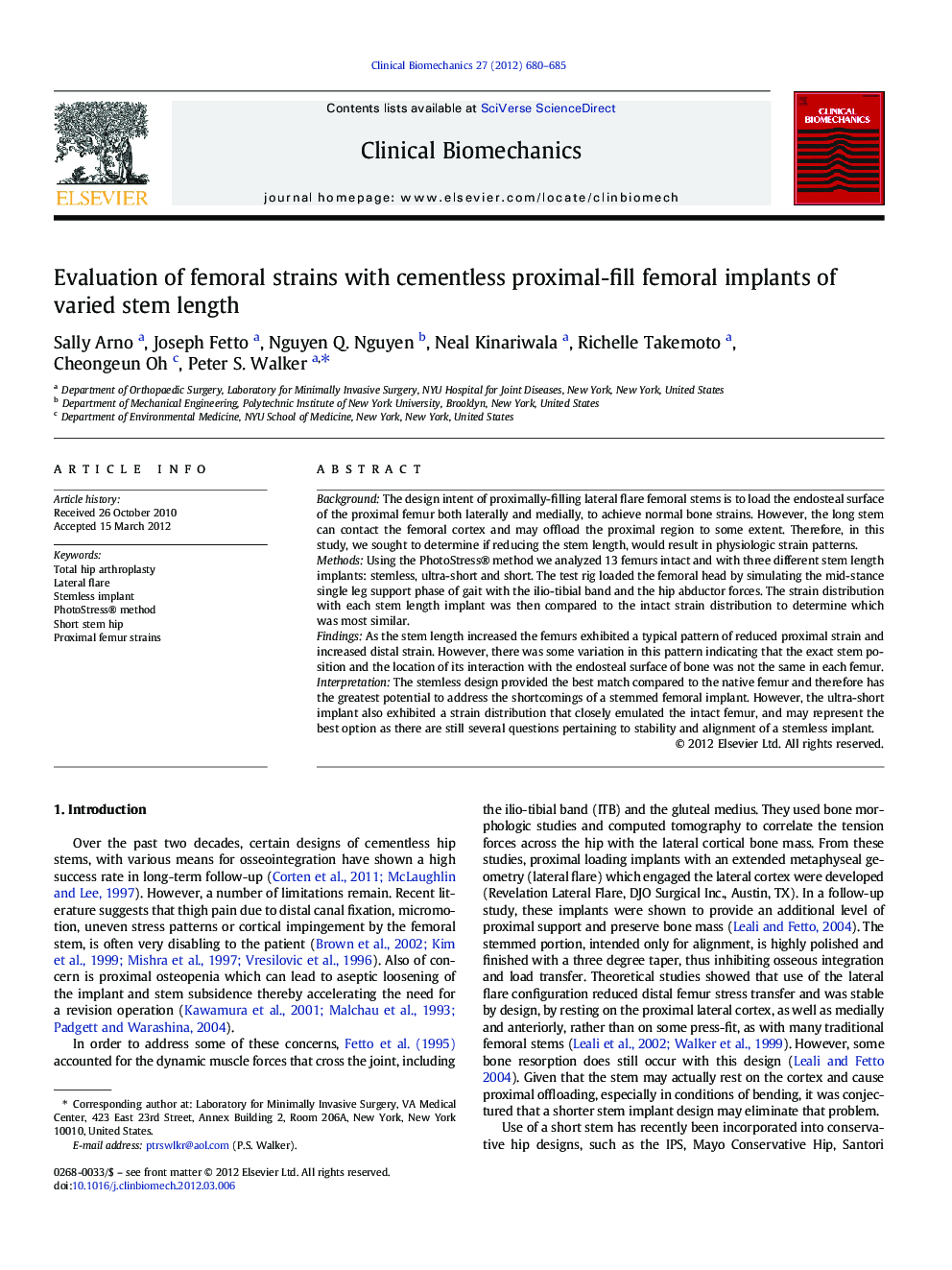| Article ID | Journal | Published Year | Pages | File Type |
|---|---|---|---|---|
| 4050782 | Clinical Biomechanics | 2012 | 6 Pages |
BackgroundThe design intent of proximally-filling lateral flare femoral stems is to load the endosteal surface of the proximal femur both laterally and medially, to achieve normal bone strains. However, the long stem can contact the femoral cortex and may offload the proximal region to some extent. Therefore, in this study, we sought to determine if reducing the stem length, would result in physiologic strain patterns.MethodsUsing the PhotoStress® method we analyzed 13 femurs intact and with three different stem length implants: stemless, ultra-short and short. The test rig loaded the femoral head by simulating the mid-stance single leg support phase of gait with the ilio-tibial band and the hip abductor forces. The strain distribution with each stem length implant was then compared to the intact strain distribution to determine which was most similar.FindingsAs the stem length increased the femurs exhibited a typical pattern of reduced proximal strain and increased distal strain. However, there was some variation in this pattern indicating that the exact stem position and the location of its interaction with the endosteal surface of bone was not the same in each femur.InterpretationThe stemless design provided the best match compared to the native femur and therefore has the greatest potential to address the shortcomings of a stemmed femoral implant. However, the ultra-short implant also exhibited a strain distribution that closely emulated the intact femur, and may represent the best option as there are still several questions pertaining to stability and alignment of a stemless implant.
